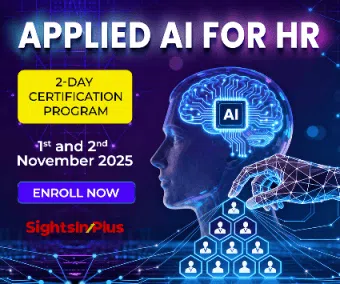Large Indian companies and conglomerates find themselves grappling with a critical challenge: an acute shortage of skills in individuals.
As they chart ambitious expansion plans across new business areas, this scarcity of qualified professionals threatens to delay projects and impact growth strategies. Let’s understand the details of this talent crunch and explore how organizations are responding to bridge the gap.
Professionals Lacking Skills: The Magnitude of the Problem
India, a hub of innovation and enterprise, faces a daunting projection. A potential skill deficit of 30-32 million people by the end of fiscal 2025. Looking further ahead, by 2027, this gap could widen to 47-49 million.
Key sectors such as automobile, health, real estate, pharma, textile, and construction bear the brunt of this shortage.
Even sunrise sectors like renewable energy, semiconductors, electronics manufacturing, and electric vehicles anticipate a manpower shortfall of 2 million in the next two years.
“The gap is on account of the lack of employability which is widening the skill gap,” said Sumit Kumar, chief strategy officer, TeamLease Degree Apprenticeship.
“Organisations are open to investing in fixing the employability issues and creating a sustainable channel for capacity and capability building,” he added.
Also Watch: 40% Rise in FY24 Sexual Harassment? Handling Retaliation, Click Here
The Employability Gap
The root cause lies in the widening employability gap. While demand for skilled professionals soars, the readiness of the workforce to meet these requirements lags behind.
Organizations grapple with the challenge of finding candidates who possess the right blend of technical expertise, adaptability, and problem-solving skills.
“The most critical shortages are in areas requiring expertise in auto electric and electronics,” Tata Motors chief HR officer Sitaram Kandi said.
“There is a high demand for technicians skilled in EV technology, battery technology, high-voltage systems, software-driven vehicles, data, and artificial intelligence,” he added.
Investing in Skills Building
To address this crisis, large companies are taking proactive steps. Here’s how some industry leaders are tackling the talent shortage:
Tata Motors: Focusing on EV Technology and Beyond
Tata Motors, a stalwart in the automotive sector, recognizes that the most critical shortages lie in areas requiring expertise in auto electric and electronics.
The demand for technicians skilled in electric vehicle (EV) technology, battery technology, high-voltage systems, software-driven vehicles, data, and artificial intelligence is soaring.
Tata Motors is actively seeking to recruit workers with these specialized skills, ensuring they stay ahead in the race for innovation.
Also Watch: The Future of Jobs in BFSI Sector in FY25, Click Here
Larsen & Toubro (L&T): Bridging the Gap
According to L&T Group CHRO C Jayakumar, the demand-supply gap is around 10-15% for the company, but it is narrowing because of “various concerted efforts”.
The shortages primarily affect blue-collar roles such as carpenters, fitters, masons, riggers, scaffolders. They extend to areas like painting, tiling, gladding, welding, and electrical work.
L&T has taken initiatives to reskill and train workers through its skill development institutes, site-based training, and collaborations with state governments and local bodies.
Reskilling and Upskilling Initiatives: Organizations are investing in reskilling and upskilling programs. By equipping existing employees with new-age skills, they ensure adaptability and relevance.
These efforts not only address immediate gaps but also prepare the workforce for future disruptions.
Conclusion
The talent shortage poses a significant risk to growth plans. However, organizations that prioritize skill development, invest in training. They foster a culture of continuous learning can turn this challenge into an opportunity.
By nurturing a skilled workforce, companies can drive innovation, enhance productivity, and secure their position in a competitive market.
Note: We are also on WhatsApp, LinkedIn, Google News, and YouTube, to get the latest news updates, Subscribe to our Channels. WhatsApp– Click Here, Google News– Click Here, YouTube – Click Here, and LinkedIn– Click Here.



